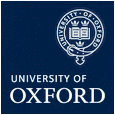1. Active Matter: "Evading the Decay to Equilibrium"
Biological systems avoid equilibrium by taking chemical energy from their surroundings and using it to do work. Cells organise intra-cellular components into the structures they need to grow, reproduce, and move. Tissues, collections of cells, differentiate locally as they develop from egg to animal.
Dense, active systems, for example colonies of bacteria, starling flocks or layers of epithelial cells, also exist out of thermodynamic equilibrium. They have complex collective behaviour characterised by turbulence and self-propelled topological defects. Can the physical theories of non-equilibrium statistical physics, developed recently to describe active matter, help understand biological processes such as morphogenesis, wound healing and cell motility?
|
|

